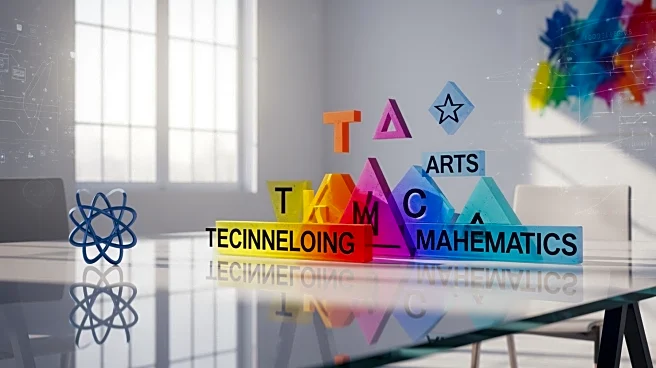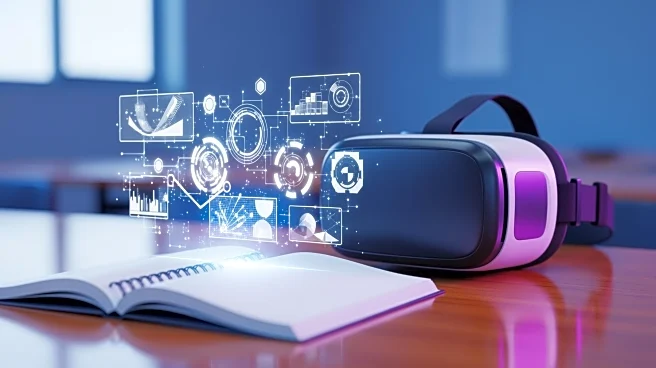What's Happening?
Recent research on STEAM education has identified key trends in the integration of arts into STEM disciplines, emphasizing the role of teachers and innovative classroom tools. Studies highlight the importance
of teachers' perceptions and professional skills in effectively implementing STEAM programs. Innovations such as virtual classroom environments and creative curriculum designs are fostering student engagement and enhancing learning outcomes. The integration of arts into STEAM education is recognized for offering new ways of thinking and problem-solving, although practical implementation remains challenging due to institutional constraints.
Why It's Important?
The evolution of STEAM education is crucial for preparing students for the demands of the 21st century, fostering creativity, critical thinking, and interdisciplinary skills. By integrating arts into STEM, educators can provide more holistic learning experiences that enhance students' cognitive and emotional development. This approach also addresses social equity and diversity, offering inclusive educational opportunities that cater to diverse student backgrounds. As STEAM education continues to evolve, it holds the potential to transform traditional educational models and better equip students for future challenges.
Beyond the Headlines
The integration of arts into STEAM education not only enriches learning experiences but also challenges conventional educational paradigms. It encourages educators to rethink curriculum design and teaching methods, promoting a more inclusive and adaptable educational framework. As schools navigate the complexities of interdisciplinary teaching, ongoing research and policy reforms will be essential in overcoming barriers and maximizing the benefits of STEAM education.












